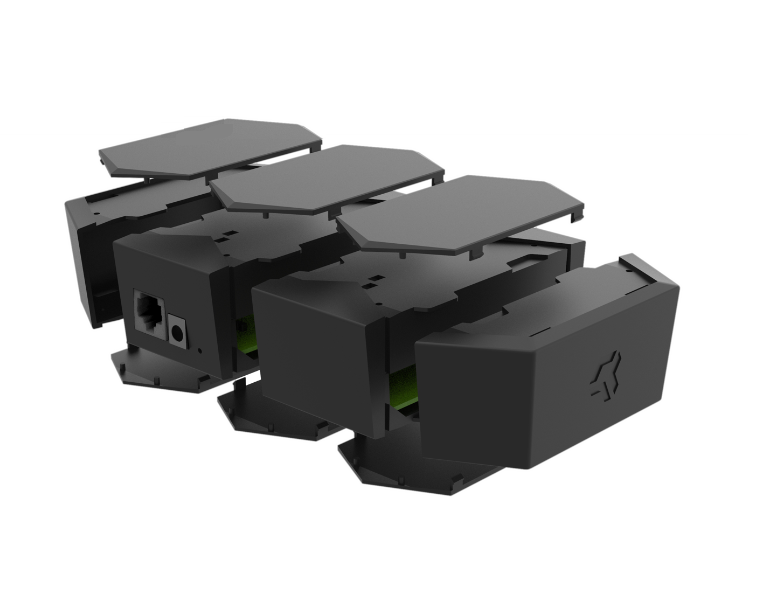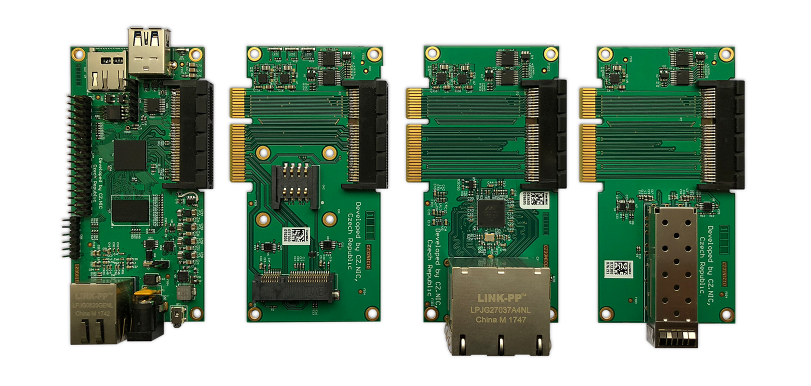

By Maen Suleiman, Senior Software Product Line Manager, Marvell
Marvell ARMADA® embedded processors are part of another exciting networking solution for a crowdfunding project and are helping “power” the global open hardware and software engineering community as innovative new products are developed. CZ.NIC, an open source networking research team based in the Czech Republic, just placed its Turris MOX modular networking appliance on the Indiegogo® platform and has already obtained over $110,000 in financial backing.
MOX has a highly flexible modular arrangement. Central to this is a network processing module featuring a Marvell® ARMADA 3720 network processing system-on-chip (SoC). This powerful yet energy efficient 64-bit device includes dual Cortex®-A53 ARM® processor cores and an extensive array of high speed IOs (PCIe 2.0, 2.5 GbE, USB 3.0, etc.). 
Figure 1: The MOX Solution from CZ.NIC
The MOX concept is simple to understand. Rather than having to procure a router with excessive features and resources that all add to the cost but actually prove to be superfluous, users can just buy a single MOX that can subsequently be extended into whatever form of network appliance a user needs. Attachment of additional modules means that specific functionality can be provided to meet exact user expectations. There is an Ethernet module that adds 4 GbE ports, a fiber module that adds fiber optic SFP connectivity, and an extension module that adds a mini PCIe connection. At a later stage, if requirements change, it is possible for that same MOX to be repurposed into a completely different appliance by adding appropriate modules. 
Figure 2: The MOX Add-On Modules - Base, Extension, Ethernet and SFP
The MOX units run on Turris OS, an open source operating system built on top of the extremely popular OpenWrt® embedded Linux® distribution (as supported by Marvell’s ARMADA processors). This gives the appliance a great deal of flexibility, allowing it to execute a wide variety of different networking functions that enable it to operate as an email server, web server, firewall, etc. Additional MOX modules are already under development and will be available soon.
This project follows on CZ.NIC’s previous crowdfunding campaign using Marvell’s ARMADA SoC processing capabilities for the Turris Omnia high performance open source router - which gained huge public interest and raised 9x its original investment target. Turris MOX underlines the validity of the open source software ecosystem that has been built up around the ARMADA SoC to help customers bring their ideas to life.
Click here to learn more on this truly unique Indiegogo campaign.
By Todd Owens, Field Marketing Director, Marvell
 Ok, so we know what substitutions we can make in these vSAN storage solutions. What are the benefits to the customer for making this change?
There are several benefits to the HPE/Cavium technology compared to the other adapter offerings.
Ok, so we know what substitutions we can make in these vSAN storage solutions. What are the benefits to the customer for making this change?
There are several benefits to the HPE/Cavium technology compared to the other adapter offerings.
By Tal Mizrahi, Feature Definition Architect, Marvell
There have, in recent years, been fundamental changes to the way in which networks are implemented, as data demands have necessitated a wider breadth of functionality and elevated degrees of operational performance. Accompanying all this is a greater need for accurate measurement of such performance benchmarks in real time, plus in-depth analysis in order to identify and subsequently resolve any underlying issues before they escalate.
The rapidly accelerating speeds and rising levels of complexity that are being exhibited by today’s data networks mean that monitoring activities of this kind are becoming increasingly difficult to execute. Consequently more sophisticated and inherently flexible telemetry mechanisms are now being mandated, particularly for data center and enterprise networks.
A broad spectrum of different options are available when looking to extract telemetry material, whether that be passive monitoring, active measurement, or a hybrid approach. An increasingly common practice is the piggy-backing of telemetry information onto the data packets that are passing through the network. This tactic is being utilized within both in-situ OAM (IOAM) and in-band network telemetry (INT), as well as in an alternate marking performance measurement (AM-PM) context.
At Marvell, our approach is to provide a diverse and versatile toolset through which a wide variety of telemetry approaches can be implemented, rather than being confined to a specific measurement protocol. To learn more about this subject, including longstanding passive and active measurement protocols, and the latest hybrid-based telemetry methodologies, please view the video below and download our white paper.
WHITE PAPER, Network Telemetry Solutions for Data Center and Enterprise Networks